Keeping your lawn healthy can be challenging even for the most experienced gardener. But with devices like smart sprinklers, you can easily keep up with the demands of your lawn or garden efficiently with less effort.
A smart sprinkler controller is a device that you can install for your lawn or garden to ensure your plants are watered regularly. However, it does more than just keep your plants healthy - this smart device also supports zones and helps you conserve water.
Not a techie?
We get it, you’d rather take control of everything manually to avoid technical problems. But if it helps you save time and money, isn’t it worth the investment? Plus, a lot of smart sprinklers today are user-friendly and easy to install.
You can pick cheaper products with the basic features or go for devices that have additional features - it really depends on your preferences and budget.
If you’re the type of person who loves to tinker and has the time and talent to customize your own smart device, then you could go for DIY solutions which will save you a lot of money.
In this post, we’ll analyze and choose the best smart sprinkler controllers as well as a DIY solutions to keep your lawn and garden in top shape.
|
Product |
Pros |
Cons |
Rate |
Price |
|
|
4.6/5 |
$217 |
|
|
|
4.6/5 |
$189 |
|
|
|
4.6/5 |
$149.99 |
|
|
|
4/5 |
$169.99 |
|
|
|
3.5/5 |
$52 |
|
|
|
5/5 |
$139 |
|
|
DIY Controllers (Raspberry Pi, ESP8266) |
|
|
Less than $60 |
Best Smart Sprinkler Controllers - Off the Shelf
Here’s a comparison of the best smart sprinklers to help you keep your lawn and garden hydrated:
Rachio
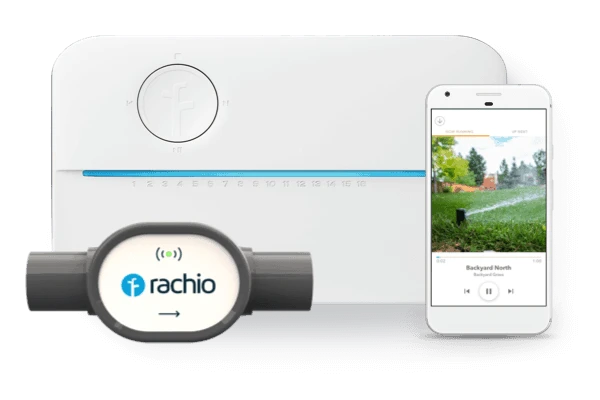
Price: $217
Rating: 4.6/5
Pros:
- Options for 8 to 16 zones
- Supports Alexa, Google Assistant, and HomeKit
- Utilizes weather forecasting to efficiently manage irrigation
Cons:
- Requires enclosure for outdoor installation
- Requires additional accessory to measure water flow
- Pricey
Rachio is a popular smart sprinkler that helps you care for your garden while reducing water consumption. It comes with an app where you can efficiently schedule irrigation. You can also program its app to the type of soil you have in your lawn or garden so that you can manage your irrigation system easily. You can also set other parameters such as crop type, solar exposure, in-cycle soak times for steep slopes or clay soil types, and sprinkler precipitation rate.
Rachio’s controller can be tied through a Hyperlocal Weather Intelligence to access climate data and pause irrigation schedules on rainy days. You can run it on auto mode to alternate days and stations to conserve water consumption. It also takes into account overcast days as well as sunny days to predict the soil’s water level.
The device also comes with a water flow meter to help you know how much water is used for your yard. For better precision, you can add a rain sensor or soil moisture sensor to the controller too.
RainMachine

Price: $189
Rate: 4.6/5
Pros:
- Can work without the internet
- Supports up to 8 zones
- Sleek design
Cons:
- No support for additional accessories
- Can only be installed indoors
If you’re looking for a smart sprinkler that is cloud-independent and easy to install, then you should consider the RainMachine. This controller has a sleek design, touchscreen display, and have almost the same features with other high-end smart sprinklers.
In addition to a smartphone app, RainMachine also features its own webserver on your LAN. To efficiently manage irrigation schedules, the controller gets its weather data directly from NOAA. You can also have the option to connect to the cloud if you want more flexibility for data storage.
RainMachine is open source so it could still get updates and support from the community in case the company shuts down.
I just did a write-up on the GreenIQ smart watering system if you're looking for another off-the-shelf solution.
Netro Sprite-12
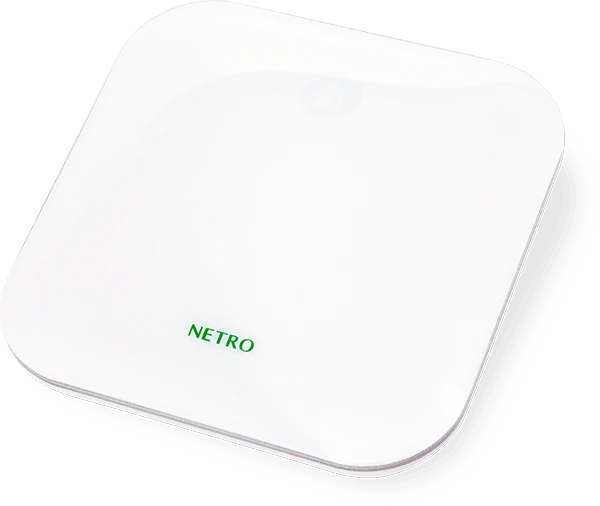
Price: $149.99
Rate: 4.6/5
Pros:
- Supports up to 12 zones
- Provides plant database
- Automatically adjusts irrigation schedule
Cons:
- No support for rain sensors and flow meters
- No on-unit manual control
- Lacks third-party support such as SmartThings, Nest and Wink
The Netro Sprite-12 is another smart sprinkler worthy to be mentioned here because of its smart features and technology enclosed in a modern, aesthetic design. Just like the other smart sprinklers, the installation is a no-brainer and user-friendly.
Some features of Netro include weather intelligence, support for Amazon Alexa and Google Assistance, can be installed both indoors and outdoors with a generic enclosure, and easy access to weather and watering reports. Netro also supports 6 and 12 zones. You have the option to extend to multiple controllers if you have a large lawn.
Lastly, Netro provides a database of plants so you can ensure the health of your lawn or garden, something which other smart sprinklers are lacking.
Hunter Hydrawise WiFi Sprinkler Controller
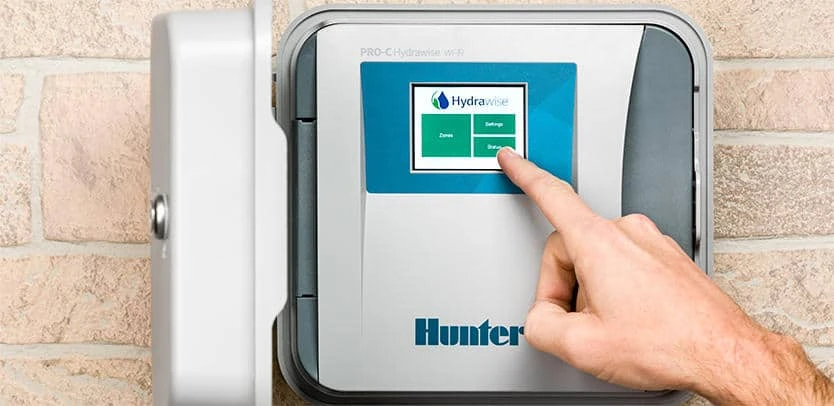
Price: $169.99
Rate: 4/5
Pros:
- Provides detailed reports of water usage
- Irrigation can be managed online or through your home router
- Can be expanded up to 36 zones
- Works with IOS and Android
Cons:
- Lacks option to integrate with a home weather station
- Option to connect with a local weather station requires $60 cost per year
- Can only be used indoors
Another popular smart sprinkler that brings intelligent water management to your garden or lawn is the Hundert Hydra-Wise WiFI Sprinkler Controller. It does not only offers smart scheduling and weather prediction, but also help leaks or broken pipes and faulty sprinkler header so you can save water consumption. You can activate an automatic shutoff on the sprinkler supply line if a leak was detected through the flow meter.
You can easily monitor and schedule irrigations that match the weather conditions so you could save both time and money. On top of that, Hydra-Wise supports rain and soil moisture sensors for precision so that you are assured that your garden or lawn gets the right amount of water needed. Weather data and irrigation schedules are synced through the cloud which you can access through an app. Moreover, it supports a plugin for homebridge so you can bring all of your Hydra-wise zones to Apple HomeKit and be able to tell Siri to when to start or stop one zone or all zones. You can also use voice control through Amazon Alexa to manage irrigation.
Orbit B-Hyve
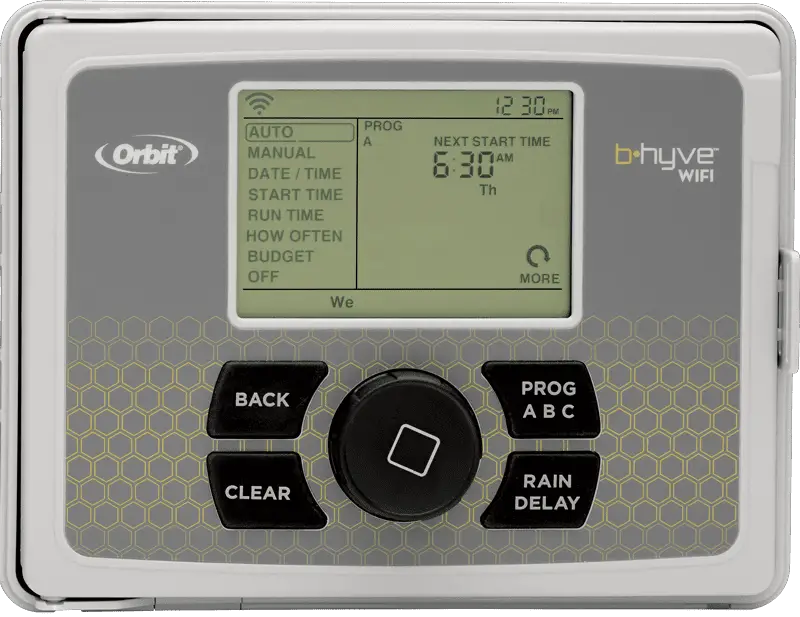
Price: $52
Rate: 3.5/5
Pros:
- Can be easily attached to a host spigot
- Works with Alexa and Google Assistant
- Works with Bluetooth and WiFi
- Comes with weather monitoring for efficient watering schedules
Cons:
- Users complain that the app is confusing to navigate
- Requires cloud connection
- Doesn’t provide options for weather source, only zip code based
Orbit's B-Hyve Smart Hose Faucet Timer is a low-cost, smart device you can attach to a hose spigot to control drip irrigation systems and traditional sprinklers. The device is designed for outdoor installation which you can easily install in a few minutes.
Some of the best features of the B-Hyve smart faucet includes connectivity via Bluetooth and WiFi. If you are planning to install multiple controllers around your home, this device can be easily expanded since the hardware supports mesh networking. You can even integrate it with Alexa to work with your existing voice-enabled home automation system.
To help you schedule watering for your garden or lawn, the device gets weather data through its Weather Sense Technology. You easily monitor the water being consumed and an option to run the device based on the water volume and a timer. The irrigation schedule can be easily customized by considering other parameters like soil type, sun exposure, and the slope of the yard.
DIY and Open-Source Smart Sprinklers
If you have the time and talent to build a DIY smart sprinkler, then we have listed some ideas below. Take note that DIY sprinkler will require you to have some technical knowledge as well as getting your hands dirty. However, you have the freedom to customize your sprinkler the way you want it for a very cheap cost!
raspberry pi sprinkler controller
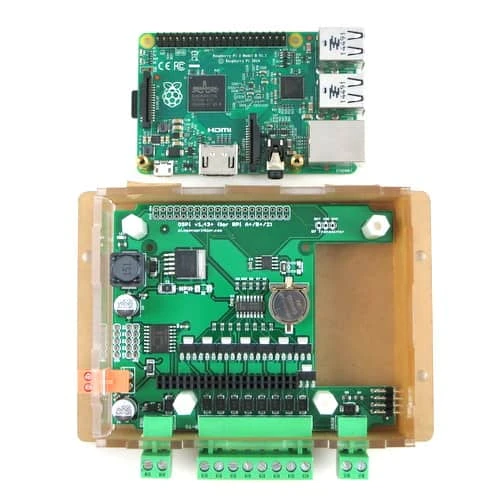
Price: $139
Rate: 5/5
Pros:
- Does its job well to manage irrigation, just like commercial smart sprinklers
- Very flexible and can be customized according to your needs
- Can support up to 8 zones
Cons:
- Needs work on installing the device and configuring the system
OpenSprinkler Pi is an open-source sprinkler designed to work with Raspberry Pi. It is a low-cost solution to manage your irrigation. You can transform your Raspberry Pi into a smart sprinkler that supports up to 8 zones which is comparable to commercial sprinklers.
Some of the features of OpenSprinkler Pi include capability to generate weather reports, manage irrigation through the web, WiFi connectivity, flexibility, and options to add rain and soil sensors.
Here’s a good tutorial on how to install the OpenSprinkler Pi for your Raspberry Pi sprinkler controller.
WiFi Controller Using Raspberry Pi
Perhaps one of the cheapest smart irrigation solutions is the Raspberry Pi. However, if you do not have some hardware and coding background, then this DIY project may not be for you. It requires some work and extra time but gives a rewarding experience once you are able to make it run.
To make this DIY work, you will need the following:
- Raspberry Pi
- bank of relays
- MQTT to use with CQC, Homeseer, Home Assistant, Smarthings
- hose and zwave valves
- aerotec z stick hub to plug to home assistant
The DIY works by running first a hass.io on your Raspberry Pi. You also need to add node red to program the automations. Node red is a graphics node.js programming language that allows super easy coding to do complex automations.
Moreover, you can add humidity sensors, temperature sensors, and moisture sensors through home assistant to get reports and weather forecasts. You can start slow and add more sensors as you get comfortable with the system.
Here’s a more comprehensive guide to set-up your own smart sprinkler using a Raspberry Pi or watch the video below:
WiFi Controller Using ESP8266
Another DIY sprinkler controller worth considering is a controller based on the ESP8266 WiFi board. The materials is almost the same with the Raspberry Pi sprinkler, except that you replace the Raspberry Pi with an ESP8266 board which is much cheaper. You can easily avail the ESP8266 board as well as the other hardware parts such as the relays on Aliexpress.
With this DIY project, you can build a smart sprinkler both with automatic and manual options. You only need a local network. No need to rely on a cloud to make it work. You can program the controller to schedule irrigation, extend to multiple number of zones, and add flow meters and soil sensors.
You can source a bunch of opto isolated relay banks with the ESP8266 / wemos powered controller and use a shift register to handle the outputs. You can find some codes from github and modify to meet your requirements, integrate into hass.io and search node-red scripts online to run it all.
You can get more details on how to build an ESP8266 smart sprinkler here or watch the video below:
Wrapping it up
Whether you’re a couch potato or a hardcore gardener, having a smart sprinkler on your side makes it easier to manage your lawn. You are assured that your plants are well hydrated at the same time save time and money. You can go for commercially available smart sprinklers, or build your own DIY. Each have their own pros and cons and your choice will entirely depend on your preferences and how much you are willing to spend.
What are your thoughts about the commercial and DIY smart sprinklers on our list? Leave your comments below!
References
Hi, I’m Christy, and I’m an electronics engineer by profession. I have taught in a university for 2 years while pursuing my master’s degree in cognitive radio and worked for a company to develop wireless medical devices. Currently, I’m doing research for a doctorate degree in engineering using a wireless sensor network for smart agriculture. I’ve been active in our local IoT community, IoT Cebu, where I participate in conducting talks about Arduino, Raspberry Pi, and DIY home automation using Wi-Fi and ZigBee devices.
